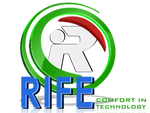Asset Tracking and Inventory Management – Medical IoT
Introduction
Managing medical assets and inventory efficiently is crucial in the healthcare sector. Hospitals and medical institutions rely on various medical devices, equipment, and supplies to provide seamless patient care. However, traditional tracking methods often lead to inefficiencies, misplacement of equipment, and unnecessary expenses.
With the integration of the Internet of Things (IoT), healthcare organizations can optimize asset tracking and inventory management. IoT technology allows real-time monitoring of medical assets, improving accuracy, reducing costs, and enhancing patient safety. From tracking high-value medical equipment to ensuring that essential supplies are always stocked, IoT solutions provide healthcare institutions with actionable insights that enhance operational efficiency.
How IoT Transforms Asset Tracking in Healthcare
IoT-powered asset tracking uses smart sensors, RFID tags, GPS, and cloud-based platforms to provide real-time data on the location, condition, and usage of medical equipment. Some key benefits include:
- Real-time tracking: Ensures medical devices are always available and in the right place.
- Theft and loss prevention: Alerts hospital staff when equipment moves outside designated areas.
- Improved maintenance schedules: Ensures timely servicing of critical medical tools, preventing unexpected breakdowns.
- Better inventory management: Prevents stock shortages and reduces wastage of consumables.
Applications of IoT in Healthcare Asset Tracking and Inventory Management
1. Medical Equipment Tracking
Technologies Used: RFID, BLE, GPS IoT
Medical devices such as ventilators, ECG machines, and infusion pumps are essential in hospitals. RFID and BLE (Bluetooth Low Energy) tags help healthcare providers track these assets in real time, ensuring they are readily available and properly maintained, reducing downtime and operational inefficiencies.
2. Surgical Instrument Tracking
Technologies Used: RFID, Z-Wave, IoT Sensors
Tracking surgical instruments is crucial to prevent loss and ensure proper sterilization. RFID tags attached to instruments help track their movement before, during, and after procedures. IoT sensors monitor their condition, alerting medical staff when they require sterilization or replacement.
3. Medication Management and Tracking
Technologies Used: RFID, NB-IoT, Cellular IoT
IoT solutions improve pharmaceutical inventory management by tracking medication movement and usage. Smart storage systems equipped with RFID ensure that drugs are stored properly and administered before expiration, minimizing risks to patients and ensuring compliance with healthcare regulations.
4. Patient Flow and Bed Management
Technologies Used: Z-Wave, Wi-Fi HaLow
Hospitals often struggle with bed availability due to inefficient patient flow tracking. IoT-enabled bed management systems provide real-time updates on bed occupancy and availability, reducing wait times and enhancing patient throughput.
5. IV Pump and Drug Infusion System Management
Technologies Used: RFID, IoT Sensors
Infusion pumps and drug delivery systems are critical for patient care. IoT-powered tracking solutions ensure these devices are used correctly, reducing misuse and alerting healthcare providers when maintenance or refilling is needed.
6. Portable Medical Device Tracking
Technologies Used: GPS IoT, Cellular IoT
Mobile medical devices such as ultrasound machines and oxygen tanks are frequently moved between departments. GPS and cellular IoT solutions help track these devices, ensuring they are readily available and reducing loss or theft.
7. Inventory Management for Consumables
Technologies Used: RFID, Z-Wave, BLE
Hospitals use large quantities of consumables, including syringes, gloves, and bandages. IoT-based inventory management solutions track stock levels in real-time, ensuring timely replenishment and preventing waste.
8. Hospital Asset Maintenance and Usage Monitoring
Technologies Used: IoT Sensors, LoRaWAN
IoT sensors continuously monitor medical devices, alerting staff when maintenance is needed. This proactive approach ensures that medical equipment remains in optimal condition, reducing downtime and costly repairs.
9. Cold Chain Monitoring for Pharmaceuticals
Technologies Used: RFID, IoT Sensors
Certain medications, vaccines, and biologics require specific storage conditions. IoT sensors track temperature, humidity, and location, providing real-time alerts if storage conditions deviate from required standards.
10. Supply Chain Visibility for Medical Equipment
Technologies Used: NB-IoT, Z-Wave, GPS IoT
IoT-enabled supply chain management ensures that medical supplies are delivered on time and in the right condition. Real-time tracking of shipments improves logistics and prevents supply shortages.
11. Asset Utilization Optimization
Technologies Used: IoT Sensors, Edge Computing
By analyzing real-time usage data, hospitals can optimize the utilization of high-value assets, ensuring that expensive equipment is neither underused nor overburdened.
12. Environmental Monitoring of Storage Facilities
Technologies Used: Environmental Testing, IoT Sensors
IoT-based environmental monitoring ensures that storage facilities for medical supplies meet regulatory standards, preventing spoilage and contamination.
13. Real-Time Tracking of Mobile Health Units
Technologies Used: GPS IoT, Cellular IoT
Emergency medical services and mobile health units rely on IoT solutions to optimize routes and track the location of critical resources, ensuring they reach patients quickly.
14. Healthcare Asset Risk Management
Technologies Used: BLE, Z-Wave, IoT Sensors
IoT-based risk management solutions detect potential issues such as unauthorized access to medical assets, equipment malfunctions, and environmental fluctuations. These systems provide instant alerts, allowing hospitals to take preventive measures.
15. Clinical Trial Equipment Tracking
Technologies Used: RFID, Z-Wave
Clinical trials require precise tracking of medical equipment and patient monitoring devices. IoT-based asset tracking ensures that these resources are available and functioning correctly, ensuring accurate data collection and regulatory compliance.
Conclusion
The integration of IoT in healthcare asset tracking and inventory management is transforming the way hospitals and medical institutions operate. By providing real-time data on the location, status, and usage of medical assets, IoT enhances efficiency, reduces costs, and improves patient care. From ensuring that life-saving equipment is always available to optimizing medication management, IoT solutions play a critical role in modern healthcare. As technology continues to evolve, IoT-driven asset tracking will become even more sophisticated, enabling a smarter and more efficient healthcare ecosystem.
